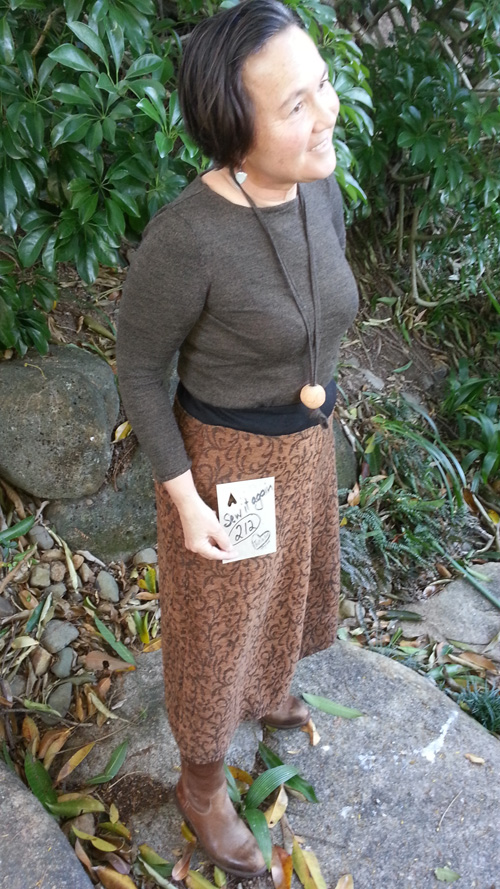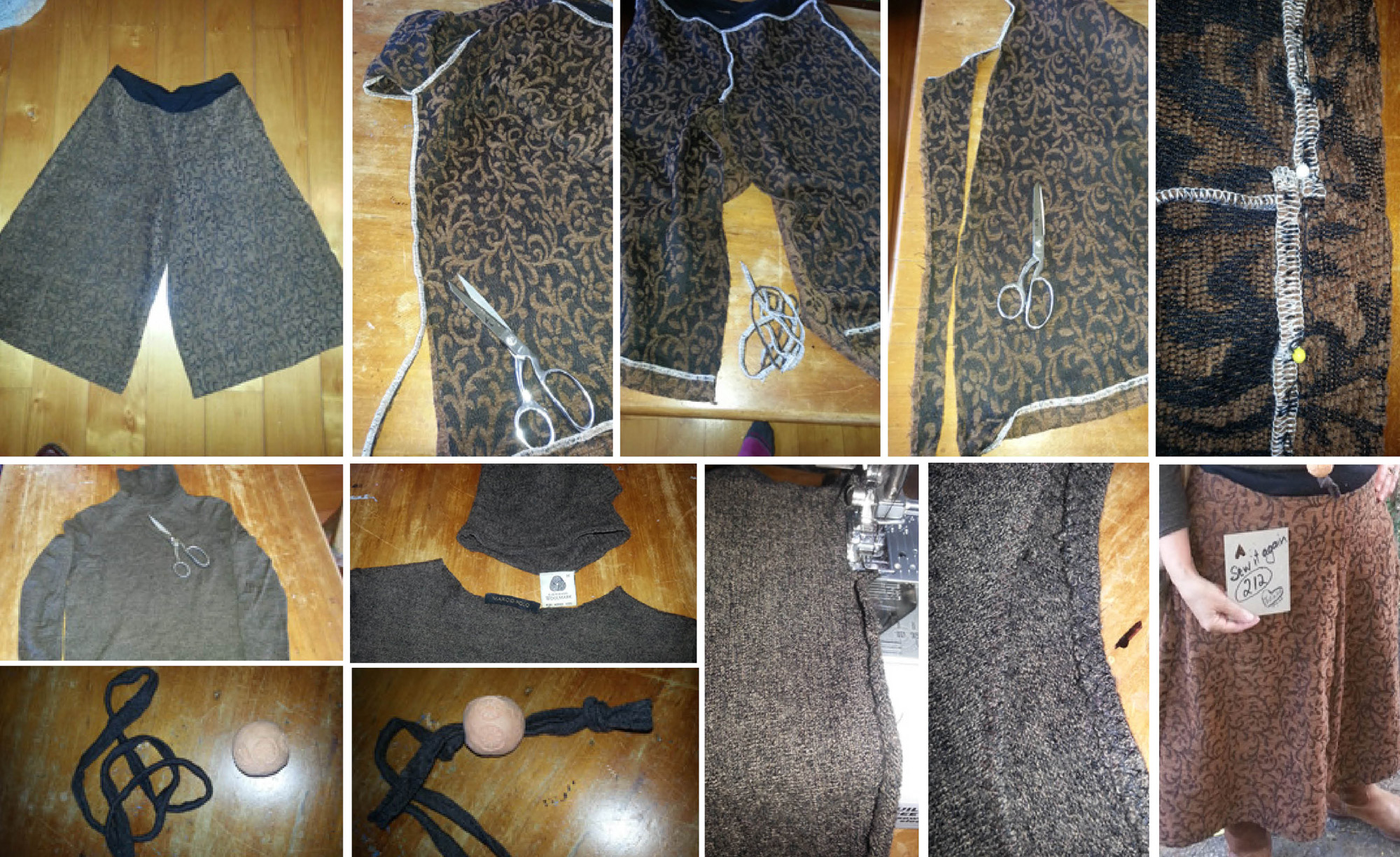 I’ve learned so much from reading Kate Fletcher‘s Sustainable Fashion and Textiles: Design Journeys book – including an understanding about the difference between clothing and fashion.
I’ve learned so much from reading Kate Fletcher‘s Sustainable Fashion and Textiles: Design Journeys book – including an understanding about the difference between clothing and fashion.
Here’s a big slab of what Fletcher says about that: “Fashion and clothing are different concepts and entities. They contribute to human well-being both functionally and emotionally. Clothing is material production; fashion is symbolic production. Although their use and looks sometimes coincide, fashion and clothes connect with us in different ways. Fashion links us to time and space and deals with our emotional needs, manifesting us as social beings, as individuals. Fashion can be what is set in motion when a designer presents a new collection on a catwalk on Milan. But equally, fashion can be the moment when a teenager crops a pair of jeans, adds a badge to an old sweatshirt and paints their Converse pumps. Clothing, in contrast, is concerned chiefly with physical or functional needs, with sheltering, shielding and protecting. Not all clothes are fashion clothes and not all fashion finds expression in garment form. Yet where the fashion sector and the clothing industry come together (in fashion clothes) our emotional needs are made manifest as garments. This overlaying of emotional needs on physical goods fuels resource consumption, generates waste and promotes short-term thinking as we turn our gaze from one silhouette, hemline and colour palate to the next in search of the next new experience. It also leaves us dissatisfied and disempowered, as physical goods, no matter how many of them we consume, can never truly satisfy our psychological needs.”
Fletcher goes on to discuss fundamental human needs as defined by Manfred Max-Neef which fall into two broad categories:
- Material needs – subsistence, protection
- Non-material needs – affection, understanding, participation, creation, recreation, identity, freedom
She says: “We consume materials to put a roof over our heads, keep us warm and well fed. Increasingly we also use them to help meet our non-material or psychological and emotional needs. Here lies a paradox: psychological needs are not easily satisfied, and in some cases are even inhibited, by consuming materials alone. Thus, consuming material goods doesn’t stem our desire for more material goods if we are buying them to meet psychological needs. Many of us will, for example, be familiar with the feeling of a new want or desire surfacing no sooner than the first one is satisfied. Put simply, consuming materials gives us a false sense of satisfying our psychological needs – a fact long recognised by many religious communities, as seen in their guidelines for living materially simple but active and spiritually rich lives. This point is further reinforced by a number of studies that suggest we are no happier now than in the 1950s, even though we own far more material possessions. Max-Neef stresses that needs are met by a combination of internal and external means, yet in our society most satisfiers come from sources outside of ourselves (like products), with very little attention place on internal means such as personal growth. The pursuit of commercial opportunity has drawn psychological needs into the market place and replaced internal means of meeting needs with products. Marketing techniques have been perfected that link products (like fashion clothes) to non-material needs, and where the consumption of fashion is a way to signal wealth, identity and social status and experience new things.”
These are fascinating insights which shed light on my personal growth journey and the Sew it Again project. Sustainable Fashion and Textiles by Kate Fletcher covers all aspects from materials, ethics, zero waste, systems, speed and user maker. Great reading, thank you Kate, I look forward to reading your new book Fashion and Sustainability: Design for Change.
Meanwhile, Sew it Again day 212 is a wool skivvy with a modified neckline and flares upcycled to skirt. The skivvy had shrunk a little with washing so the turtle neck was uncomfortably tight. I trimmed off the neck where it joined to the top, zigzagged the cut edge then folded over and zizagged again. Much more wearable now. Similarly, I trimmed off the waistband in the hope that it would stop curling up – it is looser but still rolling up, so I tucked it in instead. I used the waistband offcut as a rope for a clay bead that has been lying about the place. The flared elastic-waist trousers are easy to convert to a skirt because when you cut out the centre-leg seam, there is enough width to recreate the centre-seam without needing to insert something extra.

Thank you for sharing this. Will be going to the library to borrow this book. Coming over via Karen Ellis!
Great to be connected Agy – I see you sharing lots with Karen #scavengerstyle on Twitter
Thanks Agy for joining the dots and making the connections between the three of us. We all have a passion for REuse of textiles. It makes me feel like I am not alone on my mission.
I think we are at the pointy end of a grass-roots community response to excess clothing consumption. Refashioning what we already have instead of buying new opens the conversation about where clothes come from, where they end up, and their environmental and social impact along the way.